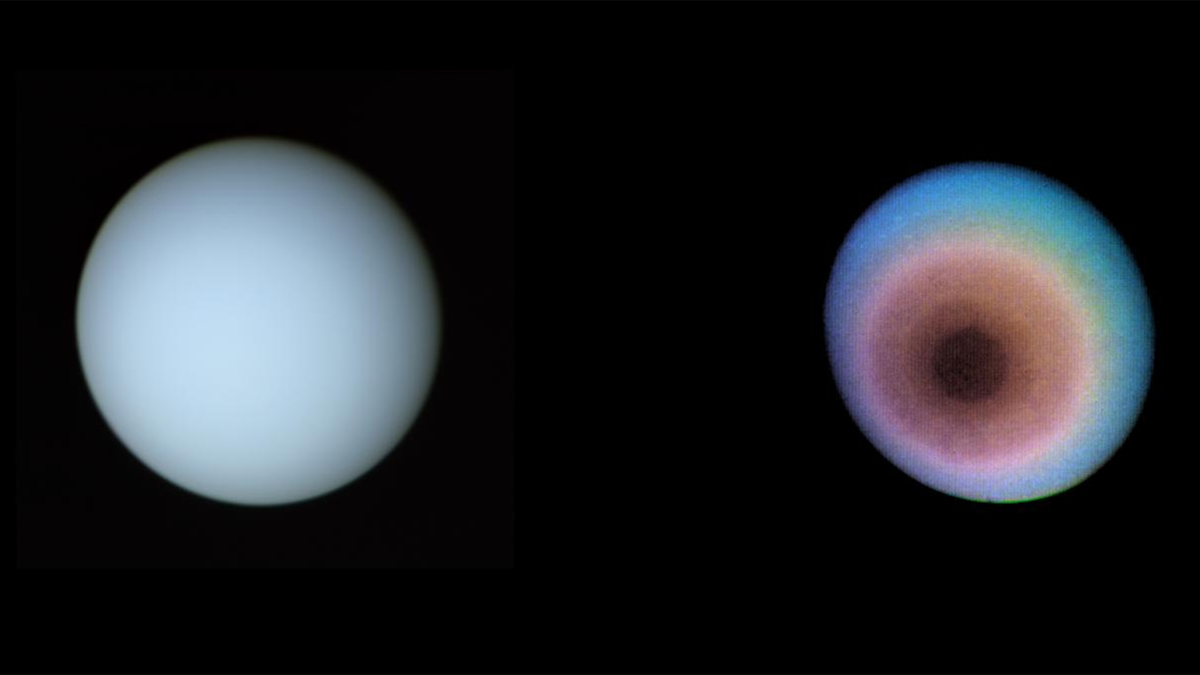Question Your World: Why Is Everyone Talking about Uranus?!
The biggest and hottest news in astronomy right now is coming from Uranus, the seventh planet from the Sun and literally the butt of the best astronomy jokes ever made! Why is everyone talking about Uranus? This distant ice giant is all over the headlines again as the planetary science community prepares to finally reach for Uranus.
Every decade, the National Academies of Sciences, Engineering, and Medicine releases a publication suggesting long-term missions for NASA and other government agencies. A few examples of missions that came from previous decadal surveys include a bunch of those Mars rovers for red planet exploration and sample returns, and a mission to go to Jupiter’s moon Europa, which is currently slated for a 2024 launch.
So, why do these come every ten years? First of all, we’re not technologically ready to pull off all these missions at the snap of a finger. The missions required years of research, tests, building models, designs, fine tuning and tweaking to get everything ready for maximum efficiency and productivity when their spacecraft is millions of miles away from home! Also, don’t forget everything is in constant motion out in space, so planning ahead for future launch windows can help a spacecraft get to its destination faster and cheaper.

Image credit: NASA
Back to this: why are all eyes now on Uranus? There’s still so much to know about this gas giant. We’ve only had one spacecraft ever go to Uranus, the Voyager 2 mission which Carl Sagan was famously part of billions and billions of years ago. Okay, that was an exaggeration: it really flew by Uranus in 1986, but still that’s the last time any scientific instruments have been there.
We’ve also only seen close-up photos of that planet’s moons from one side, again from Voyager 2. A new mission to Uranus might reveal that some of its moons have oceans below their icy crusts, or might help scientists unravel how Uranus and its system of rings and moons ended up rotating sideways.
Knowing as much as possible about gas giants like Uranus and Neptune is also important because many planets discovered orbiting other stars appear to be comparable to the two in our own solar system we know the least about. We're unlikely to ever cross the vastness of space to study an exoplanet in detail, so we should probably take advantage of the examples in our own cosmic backyard.
Currently Uranus is top priority and scientists are eager to see if NASA will take this recommendation and run with it. There’s a chance Mars-related items could pivot some of the funding and planning, but for the moment all eyes are on Uranus. Using a gravity assist from Jupiter, it would take about 13 years just to reach this distant destination. Good thing we have these decadal surveys!
Stay tuned as more and more excitement builds around these future missions. And, let's remember, this is serious science, folks. If you made it through this piece without giggling, good for you. If you’re only here to make jokes about Uranus, we’ll politely ask you to … butt out.


